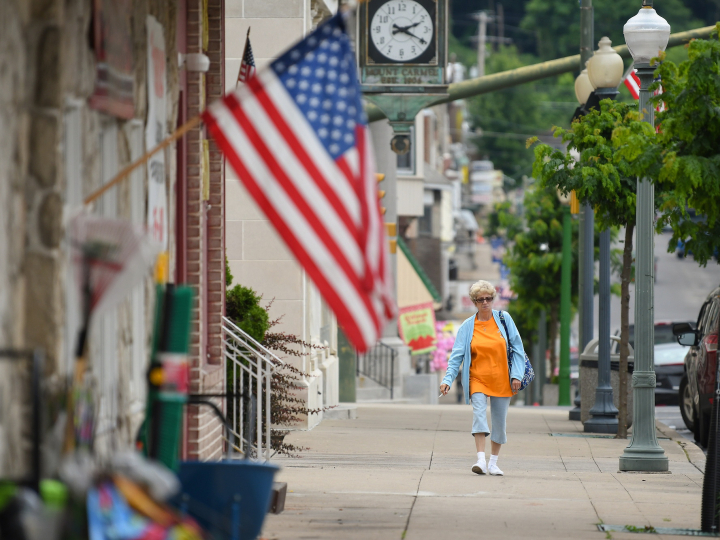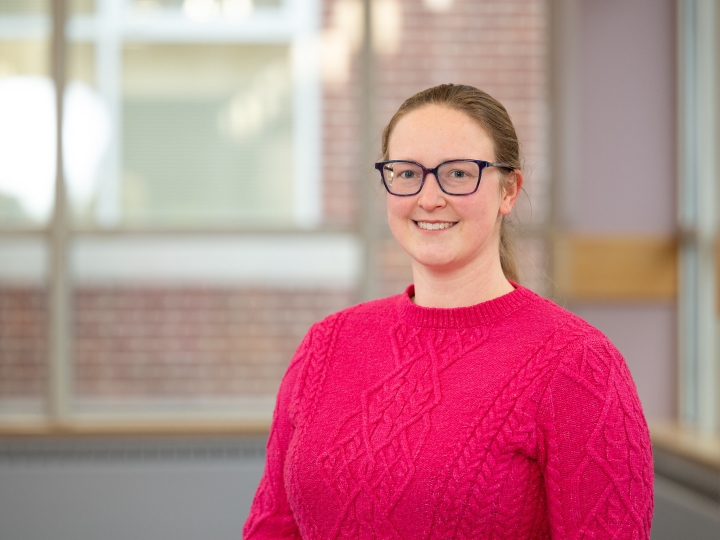Bucknell Team Works to Revitalize Lakota Language and Culture
October 21, 2016
Some linguists predict that up to 90 percent of the world's 7,000 languages will be extinct by the end of this century. Professor Richard Henne-Ochoa, education, is working to make sure Lakota is not among them.
Spoken by the Lakota people, who are part of seven related Sioux Native American tribes indigenous to the Northern Plains of the United States, the language has been the focus of Henne-Ochoa's research since he first visited the Pine Ridge Indian Reservation as a tourist more than two decades ago. Located in southwestern South Dakota about 100 miles southeast of Mount Rushmore, the reservation is home to nearly 30,000 Lakota people.
Last summer, Henne-Ochoa and Presidential Fellows Caroline Bixby '18 and Gabi Hitel '18 visited the reservation to continue this research. While there, they also had an opportunity to help teachers in the Wounded Knee District School develop curriculum materials for a Lakota studies course, which teaches elementary students the language, culture and history of the Lakota people.
"I got really interested in language use on the reservation, and when I started looking into it, just about everyone told me about the need to revitalize Lakota," said Henne-Ochoa. "I became fascinated by the role of formal education institutions in this revitalization process and also how the Lakota people's history has had a lasting impact on the language's decline."
He has studied how and why Lakota has relatively few speakers today, the vast majority of them tribal elders. The reasons are the same as those that have caused more than 600 other languages, according to some experts, to go extinct: cultural and physical genocide and forced assimilation.
Currently, Henne-Ochoa is documenting past and present communicative practices of the Lakota people and establishing a digital archive of these materials that he hopes can eventually be used to contribute to language revitalization both inside and outside the classroom. This documentation includes personal interviews and observations; analyzing Lakota language and culture in the media, including speeches, newspaper articles and radio shows that were created and distributed on the reservation; and translating recordings of today's Lakota elders into English to preserve the wóiyaksape, or "words of wisdom," for younger generations who don't yet understand or speak fluent Lakota.
"In any culture, there are certain ways of speaking and particular styles of verbal communication, and Lakota culture is no different," Henne-Ochoa explained. "Even though Lakota children primarily speak English, they still use Lakota ways of communicating and have sophisticated repertoires of communication. So, even though few Lakota children speak Lakota today, the language is very much alive in terms of Lakota ways of speaking."
Henne-Ochoa has worked for the last two years with Bixby and Hitel on the documentation project. Grants from the Field Research & Teaching Laboratory and the Bucknell Program for Undergraduate Research enabled the trio to travel to the reservation this past summer, where they helped create materials for teaching Lakota and assisted in acquiring special fonts needed for the Lakota language. Henne-Ochoa anticipates they may have a larger role in producing curriculum materials as the school year progresses.
"There is a great need in Lakota communities for materials that teach the Lakota language as well as common school subjects such as science using the Lakota language as the medium of instruction," said Henne-Ochoa. "Additionally, the Lakota people rightfully control how such materials are put together and tailor them to their particular communities, so we were honored to have the opportunity to help them."
Visiting the reservation and contributing to the development of instructional materials also had an impact on Bixby and Hitel, who both cited Henne-Ochoa's passion as one of the main things that attracted them to this project as Presidential Fellows.
"The importance of this work has really struck me," said Bixby, an international relations and Spanish major. "We are providing knowledge and ultimately trying to help save a language that is endangered. It is important to know how, when and why a language, and potentially a culture, is threatened. The teachers are trying their best to teach the language and culture to the students."
"Being able to learn about their culture and the way they live has kind of changed the way I go about my life," said Hitel, a philosophy major. "I feel I can best contribute to positive change by telling others about the Lakota people's way of life and what we can do to help them improve their own situation."
Henne-Ochoa has published his work showing the sophistication of Lakota children's linguistic repertoires and how their strong grasp of Lakota ways of speaking provide a structure onto which the language itself can be restored. He also plans to work with Lakota people to expand the revitalization process beyond formal education institutions.
"The hope is to have all generations of Lakota people use the language not just in school but in both community and family endeavors as well, because language revitalization has to be comprehensive," said Henne-Ochoa. "Letting the language go is not an option for many Lakota people because it is a core element of their identity as individuals and as a sovereign nation, and because they see it as essential to their own cultural survival."

